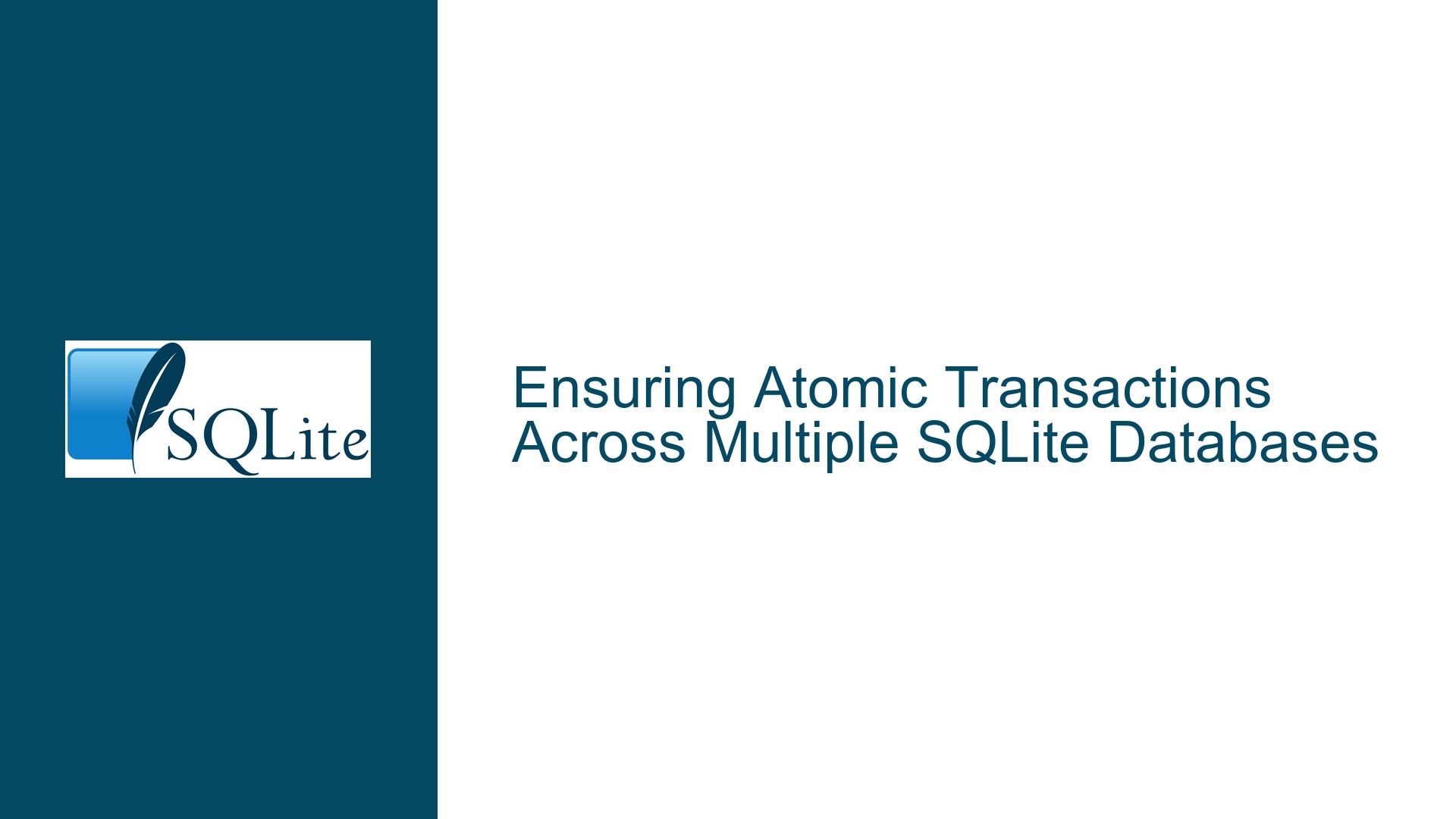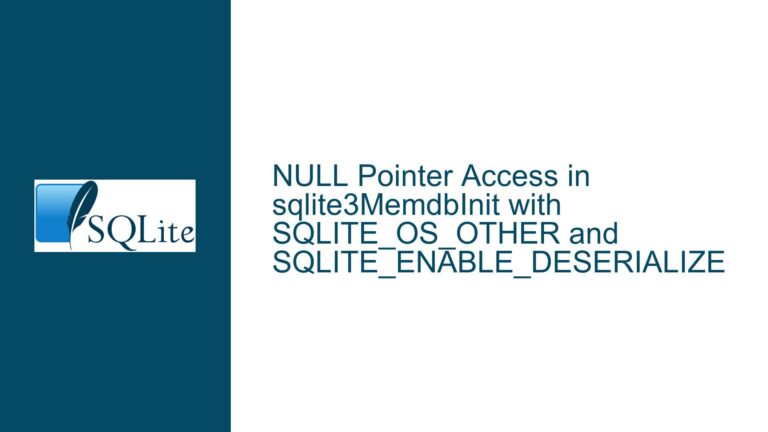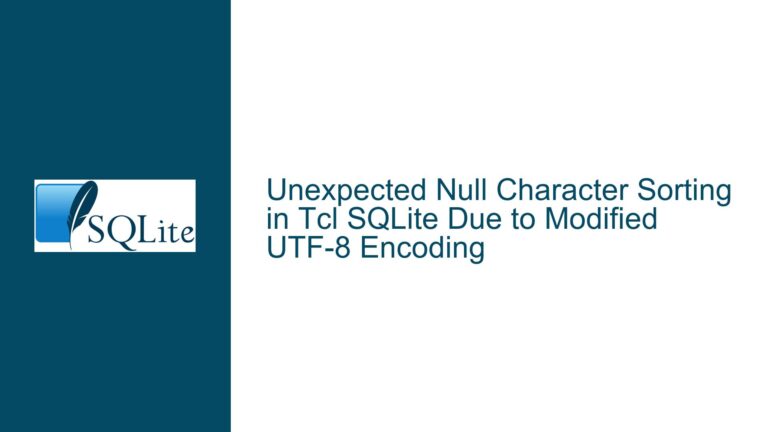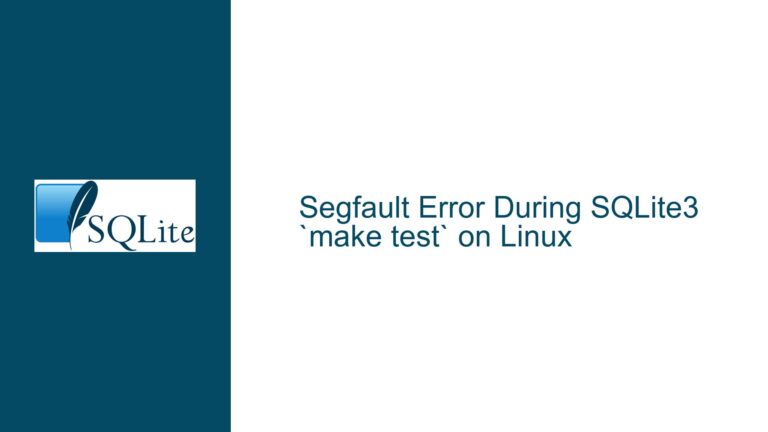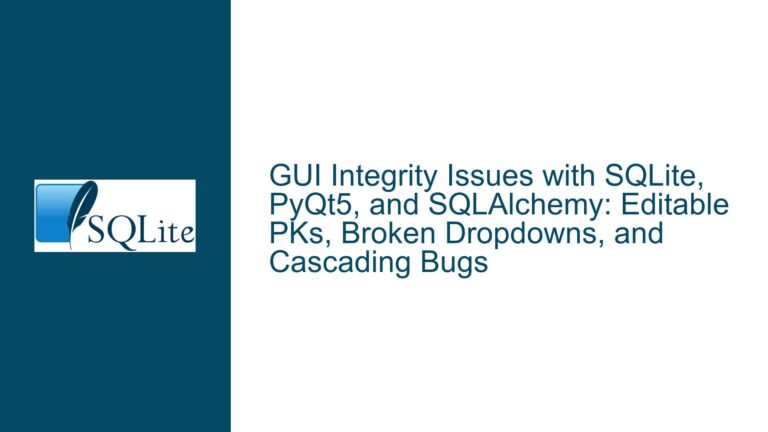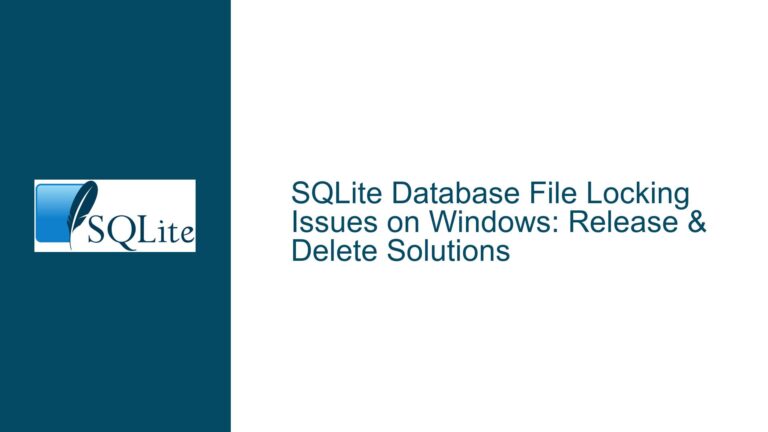Ensuring Atomic Transactions Across Multiple SQLite Databases
Atomicity Challenges in Multi-Database Transactions
When working with SQLite, one of the most critical aspects to consider is the atomicity of transactions, especially when these transactions span multiple databases. Atomicity ensures that a series of operations either complete entirely or not at all, which is crucial for maintaining data integrity. In scenarios where an application interacts with multiple SQLite databases, the challenge is to ensure that changes made across these databases are treated as a single, atomic operation. This becomes particularly important in cases of unexpected failures, such as power outages or application crashes, where partial changes could lead to data inconsistencies.
The core issue revolves around the ability of SQLite to handle transactions that involve multiple attached databases. SQLite supports attaching additional databases to a primary database using the ATTACH DATABASE command. This feature allows queries to span multiple databases, but the atomicity of transactions across these databases is not guaranteed under all circumstances. The behavior of multi-database transactions depends on several factors, including the journaling mode and whether the databases are stored in memory or on disk.
In the default rollback journal mode, SQLite uses a two-phase commit protocol to ensure atomicity across multiple databases. This protocol ensures that changes to all involved databases are either fully committed or fully rolled back, even in the event of a crash. However, this guarantee is contingent upon the databases being stored on persistent storage (i.e., not in-memory databases) and the journaling mode not being set to WAL (Write-Ahead Logging). If either of these conditions is not met, the atomicity of multi-database transactions cannot be assured, and partial commits may occur.
Impact of Journaling Modes and In-Memory Databases on Atomicity
The journaling mode in SQLite plays a pivotal role in determining how transactions are handled, especially when multiple databases are involved. SQLite offers several journaling modes, including DELETE, TRUNCATE, PERSIST, MEMORY, and WAL. Each of these modes has implications for the atomicity of transactions, particularly in multi-database scenarios.
In the DELETE journaling mode, SQLite creates a rollback journal file that contains the original content of the database before any changes are made. This journal file is deleted once the transaction is successfully committed. The TRUNCATE and PERSIST modes are variations of the DELETE mode, differing primarily in how they handle the rollback journal file. In all these modes, SQLite uses a two-phase commit protocol to ensure atomicity across multiple databases, provided that the databases are stored on persistent storage.
The WAL journaling mode, on the other hand, introduces a different approach to handling transactions. In WAL mode, changes are written to a separate write-ahead log file instead of directly modifying the database file. This allows for concurrent read and write operations, improving performance in multi-threaded applications. However, the use of WAL mode complicates the atomicity of multi-database transactions. When WAL mode is enabled, SQLite does not use the two-phase commit protocol for transactions involving multiple databases. As a result, if a crash occurs during a commit, some databases may be updated while others are not, leading to data inconsistencies.
In-memory databases add another layer of complexity. SQLite supports the creation of in-memory databases using the :memory: filename. These databases are stored entirely in RAM and are not persisted to disk. While in-memory databases offer significant performance benefits, they do not support the two-phase commit protocol. Consequently, transactions involving in-memory databases cannot be guaranteed to be atomic across multiple databases. If a crash occurs, any changes made to in-memory databases will be lost, and there is no mechanism to ensure that changes to other databases are rolled back.
Implementing Robust Multi-Database Transactions with PRAGMA Settings and Backup Strategies
To ensure the atomicity of transactions across multiple SQLite databases, it is essential to carefully configure the journaling mode and implement robust backup strategies. The first step is to avoid using WAL journaling mode and in-memory databases if atomicity across multiple databases is a requirement. Instead, opt for the DELETE, TRUNCATE, or PERSIST journaling modes, which support the two-phase commit protocol.
The journaling mode can be set using the PRAGMA journal_mode command. For example, to set the journaling mode to DELETE, you would execute the following command:
PRAGMA journal_mode = DELETE;
This ensures that SQLite will use the rollback journal mechanism, enabling the two-phase commit protocol for multi-database transactions. It is also important to ensure that all databases involved in the transaction are stored on persistent storage, as the two-phase commit protocol relies on the ability to write and read from disk.
In addition to configuring the journaling mode, implementing a robust backup strategy is crucial for maintaining data integrity in the event of a crash. SQLite provides several mechanisms for backing up databases, including the VACUUM command and the sqlite3_backup API. The VACUUM command can be used to rebuild the database file, effectively creating a backup. However, this command can be resource-intensive and may not be suitable for large databases.
The sqlite3_backup API offers a more efficient way to create backups. This API allows you to copy the contents of one database to another, either in its entirety or incrementally. By regularly backing up your databases, you can minimize the risk of data loss in the event of a crash. It is also advisable to implement a mechanism for verifying the integrity of your backups, such as using the PRAGMA integrity_check command.
Another important consideration is the use of transactions to group related operations. By wrapping related changes in a transaction, you can ensure that they are treated as a single atomic operation. For example, if you need to update two databases as part of a single operation, you would start a transaction, make the changes to both databases, and then commit the transaction. If any part of the operation fails, the entire transaction can be rolled back, ensuring that no partial changes are applied.
BEGIN TRANSACTION;
-- Update database 1
UPDATE db1.table1 SET column1 = value1 WHERE condition;
-- Update database 2
UPDATE db2.table2 SET column2 = value2 WHERE condition;
COMMIT;
In the event of a crash, SQLite will use the rollback journal to undo any partial changes, ensuring that the databases remain consistent. However, this only works if the journaling mode is set to DELETE, TRUNCATE, or PERSIST, and the databases are stored on persistent storage.
Finally, it is important to monitor the health of your databases and respond promptly to any signs of corruption. SQLite provides several tools for detecting and repairing database corruption, including the PRAGMA integrity_check and PRAGMA quick_check commands. These commands can be used to verify the integrity of a database and identify any issues that need to be addressed.
In conclusion, ensuring the atomicity of transactions across multiple SQLite databases requires careful configuration of the journaling mode, the use of persistent storage, and the implementation of robust backup and monitoring strategies. By following these best practices, you can minimize the risk of data inconsistencies and ensure that your application remains reliable even in the face of unexpected failures.
